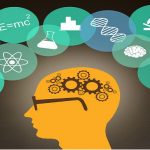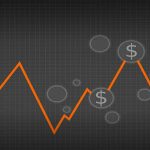Neuroeconomics – understanding human economic decisions

As human knowledge develops, scientific disciplines arise, vanish, fuse together or split apart. Newer technologies allow researchers access to areas newer explored before, from the lowest layers of the oceans, to the greatest depths of the human mind.
Why do humans often take counterintuitive economic decisions which are not in favor of optimizing utility? Why do they sometimes act irrationally, despite thinking they made choices based on objective risk evaluations? What are the links between human action and productivity?
Neuroeconomics starts to provide conclusive answers to such questions by filling the gaps in conventional economic theories.
Holding a warm drink has been proven to influence test subjects into perceiving strangers as friendly and trustworthy.
Carrying a heavy object while making a decision will increase the perceived importance of the said decision. Customers display increased purchase behavior in malls where jasmine scent is sprayed into the air. Neuroscience is to be credited for such interesting findings, representing an interesting step forward.
What is this hybrid science?
Neuroeconomics is an emerging scientific branch focused, simply put, on economic decision making. It assesses the processes which take place inside the brain and influence human behavior when making judgements, with a focus on choices that have a financial impact: from personal investments in new assets to major transactions affecting entire countries.
Furthermore, this analysis is not only conducted theoretically or through behavioral experiments, as it is the case with economics and psychology, but is based on brain imaging and the localization of brain activity.
Modern neuroscientific tools like electro-encephalograms – EEGs or PET– scans allow researchers to see how the brain actually changes between different cognitive processes.
In other words, as Jonathan Cohen, co-director of the Princeton Neuroscience Institute at Princeton University describes it, one “can watch, in close to real time, what’s happening in someone’s brain while they’re performing some mental task”.

How does it work and what are its benefits?
Neuroeconomics allows an increasingly precise measurement of thoughts and feelings. For a better understanding of its functions and the new possibilities it offers, the genealogy of neuroeconomics should be taken under the magnifying glass and further analyzed.
It is the child of a large scientific family and is exactly what its name suggests: a fusion of neuroscience and economics. Thereby, both these sciences, perhaps despite popular believe, are closely related to psychology.
First of all, psychology is the study of human behavior, whereby neuroscience, in its endeavor to analyze the nervous system, offers anatomical answers on the drivers of human action.
For instance, psychologically speaking, depression is an alteration of the individual’s behavior, characterized by lack of liveliness and apathy, possibly triggered by an external negative life event.
From a neurological perspective, depression is signaled by an altered brain structure and decreased chemical functions and can also be triggered by substances such as medication or hormones.
Secondly, psychology and economy are “siblings separated at birth” according to professor Cohen. The family story of how these disciplines have been disconnected and how they start to reunite again is being told in the paper Neuroeconomics: How Neuroscience Can Inform Economics:
Economics parted company from psychology in the early twentieth century. Economists became skeptical that basic psychological forces could be measured without inferring them from behavior […] But remarkable advances in neuroscience now make direct measurement of thoughts and feelings possible for the first time, opening the “black box” which is the building block of any economic interaction and system—the human mind.
The main conclusion of the paper is the fact that the human brain is based on both controlled and automatic processes and operates using both cognition and emotional responses; neuroeconomics studies how these mechanisms interact to drive economic actions by measuring physical reactions in the brain.
Determining the factors which influence the human decision making process – feelings, cognitive processes, preferences, automatic impulsive reactions, attitude towards risk etc – opens up a wide spectrum of possibilities for economists.
From advertising to stock exchange, game theory to labor economics, understanding and thus being able to predict behavior will increase human development and overall wellbeing, if applied within an ethical framework.
Image sources:

Tags: Economic performance, Personal Development, Science




